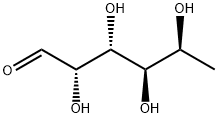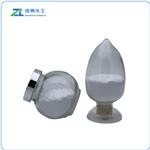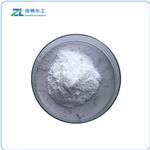Description
L-(−)-Fucose is a deoxyhexose monosaccharide found on N- and O-linked glycans and glycolipids of a wide variety of organisms. It can exist as a terminal modification of glycan structures or serve as a point of attachment for adding other sugars. In humans, L-(−)-fucose plays a role in A and B blood group antigen substructure determination, selectin-mediated leukocyte-endothelial adhesion, and host-microbe interactions.
Chemical Properties
White crystalline powder, soluble in methanol, ethanol, DMSO and other organic solvents.
Chemical Properties
l-fucose is a six-carbon sugar also known as 6-deoxy-l-galactose. Its molecular formula is C6H12O5 and its melting point is 150.0–153.0 °C. It is a white crystalline powder that easily absorbs moisture, and its hydrophilicity is weaker than that of other monosaccharides. l-fucose is the main form of fucose found in nature and is also the only levorotatory sugar used by mammals, while d-fucose is found only in some glycosides[1].
Occurrence
L-Fucose exists in nature in various biological niches. A major natural source of L-fucose is the brown algal polysaccharide fucoidan. It is also present in the polysaccharides of tragacanth, potatoes, kiwi, soybeans, varieties of wing peas, canola and other plants.L-Fucose is a minor component in plant cell wall polysaccharides, specifically rhamnogalacturonan, xyloglucan and also arabinogalactan proteins that are involved in plant cell elongation.
Uses
L-Fucose was isolated from seaweed. It finds application in cosmetics, pharmaceuticals and dietary supplements. It is used in the determination of antigen in A and B blood group. It is also used in the selection-mediated leukocyte-endothelial adhesion and host-microbe interactions. L-Fucose is also used in anti aging creams as well as to promote the accelerated healing of wounds and to reduce allergy.
Definition
ChEBI: L-fucopyranose is the pyranose form of L-fucose. It has a role as an Escherichia coli metabolite and a mouse metabolite. It is a L-fucose and a fucopyranose.
Reactions
L-Fucose is oxidised by the enzyme L-fucose dehydrogenase in the presence of nicotinamide-adenine dinucleotide phosphate (NADP+) to L-fucono-1,5-lactone with the formation of reduced nicotinamideadenine dinucleotide phosphate (NADPH) (1).
(L-fucose dehydrogenase) (1)
L-Fucose + NADP+ --> L-fucono-1,5-lactone + NADPH + H+
The amount of NADPH formed in this reaction is stoichiometric with the amount of L-fucose. It is the NADPH which is measured by the increase in absorbance at 340 nm.
Biological Functions
l-fucose has many biological functions like the antitumor effect and relieving intestinal disease, and exhibits potential as an emulsifier in the food industry. It can be used as a functional food and one of the components of bacteriostatic agents. Moreover, it also has an anti-aging function[1].
Biological Activity
L-Fucose (6-Deoxy-L-galactose) is used in studies of fucoidan polysaccharides containing glycans. It is studied as a glycan modifying carbohydrate that generates antigenic sites recognized by IgE antibodies. It is used as a substrate to identify, differentiate, and characterize enzymes such as fucosidase(s),l-fucose isomerase(s), and L-fucose dehydrogenase(s). It may be used to study organelles, and bacterial microcompartments, involved in the degradation of plant and algal cell wall sugars. L-Fucose may also be used as a reference compound in rare sugar identification and analysis.
References
[1] Yan Wang . “Research progress on the functions, preparation and detection methods of l-fucose.” Food Chemistry 433 (2023): Article 137393.





